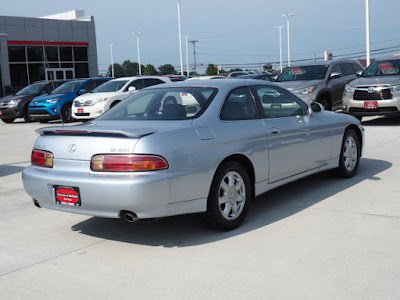Had to have been the fall of 1988 when I first saw one of these stretched Cadillac's in person. After years and years of relentless downsizing and product misfires, I knew immediately that Cadillac had finally done something right. Well, hindsight being 20-20, I can safely say after all these years that it was more like they did something less wrong. Our blue on blue subject here is a 1991 Coupe deVille
First, a little historical perspective. Introduced first in the spring of 1984 as early '85's, Cadillac's first foray into front-wheel drive, full-size cars was an out and out disaster; especially the coupes. Unbalanced with odd proportions, a half vinyl roof and fourteen-inch wheels with fake wires only exacerbating the absurdity of it, these stubby little cars certainly didn't "look" like what a Cadillac let alone a luxury car should look like. And a luxury car looking like a luxury car is of paramount importance to the luxury car buyer; especially Cadillac buyers. "Best of All, It's a Cadillac"? Sorry. This ain't no Cadillac.
Curse them as we may, even the cars the little front wheel drive Cadillac's replaced at least looked liked Cadillac's. Probably the reason why Cadillac sold as many as they did despite being powered by a variety of horrible engines. This is a 1981 powered by, of all things, a Buick V-6.
Curse them as we may, even the cars the little front wheel drive Cadillac's replaced at least looked liked Cadillac's. Probably the reason why Cadillac sold as many as they did despite being powered by a variety of horrible engines. This is a 1981 powered by, of all things, a Buick V-6.
Amazing what an inch here and there will do for balance and proportion. While certainly, no 1949 Cadillac by a long shot, the additional inch and half fore and aft that Cadillac grafted onto the "1985" deVille for 1989 made a literal huge difference. Thing is, and this is where the passage of time has eroded my opinion of these cars down, this is still an awkward, dare I say ugly car. An improvement over what came before it for certain but still super clunky.
Sad thing is the clumsy sheet metal detracts from a very nice if not stately interior. While far from today's ergonomically perfect automotive cocoons, this leather-lined vault was a nice evolution of Cadillac's storied interior design ethos years ago. Even in blue, this interior is worthy of being called a "Cadillac".
By 1991, they had sorted out most if not all the problems with their weird aluminum block, iron head V-8 engine too. Punched out to 4.9 liters for 1990 and fortified with port fuel injection for '91, what was once called the "HT4100" made 200 horsepower and 275 pounds of torque - pretty impressive. Thanks to a curb weight of around 3,500 pounds, the "4.9" moved these cars with a verve that you wouldn't be out of place saying was quite "sporty".
The reality is this '91 deVille is now just an old car whereas, for instance, that red '81 pictured above, even with a Buick V-6, was still a Cadillac. And looking back at the early 1990's, I still find it amazing that Cadillac sold any of these given the increasingly stiff competition that was just beginning to come ashore from Lexus and Infiniti. Then again, we only realize how bad off we were in retrospect.














































